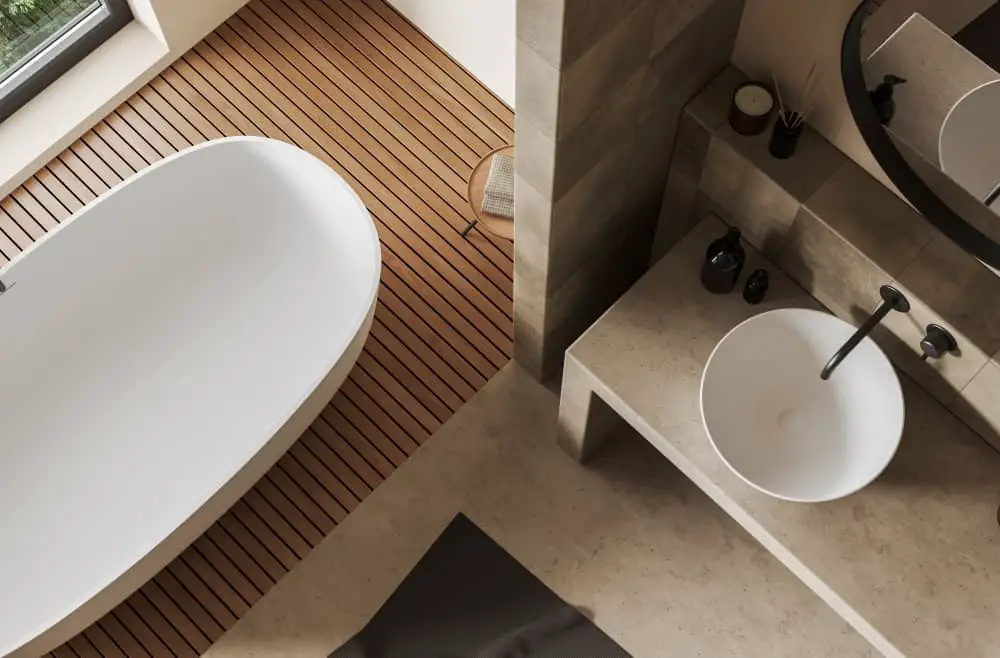Concrete is not just for sidewalks and driveways anymore—it’s made its way into our homes, providing a stylish and customizable option for many surfaces, including shower floors. With its sleek, modern aesthetic and surprising versatility, concrete has gained popularity among homeowners and designers alike. However, like any material, it comes with its own set of advantages and disadvantages. This article explores the pros, cons, and offers some essential maintenance tips for concrete shower floors.
Pros of Concrete Shower Floors
- Customization: One of the biggest draws of concrete is its incredible versatility. It can be colored, textured, and shaped to fit almost any design scheme. Whether you’re aiming for a minimalist look or something more intricate, concrete can be tailored to meet your vision.
- Durability: Concrete is known for its strength and longevity. When properly sealed and maintained, a concrete shower floor can withstand the rigors of daily use without suffering from the wear and tear that other materials might show.
- Seamlessness: Unlike tiled shower floors, concrete offers a seamless finish. This lack of grout lines not only contributes to a cleaner and more continuous look but also means fewer places for mold and mildew to accumulate.
- Aesthetics: Concrete floors can add a unique industrial charm to your bathroom. Their simple yet striking appearance can serve as the foundation for both contemporary and rustic designs.
Cons of Concrete Shower Floors
- Hardness: Concrete is extremely hard, which can be a drawback in environments where slips and falls are a risk, such as in the shower. Additionally, if you drop something fragile, like a glass bottle, it’s almost guaranteed to shatter.
- Coldness: Without embedded heating elements, concrete can feel cold underfoot, especially in cooler climates. This can make stepping out of a warm shower a rather chilly experience.
- Maintenance: While relatively easy to maintain, concrete does require regular sealing to prevent water penetration and staining. Neglecting this can lead to moisture damage and a reduction in the lifespan of the floor.
- Installation and Cost: Pouring a concrete floor involves a significant amount of preparation and labor, which can be more expensive and time-consuming than installing pre-made tiles.
Maintenance Tips for Concrete Shower Floors
- Regular Sealing: Apply a high-quality concrete sealer every one to two years to protect the surface from moisture and stains. This is particularly important in a high-moisture environment like a shower.
- Daily Cleaning: Use a squeegee after each use to remove water and reduce the risk of mildew and water spots. For cleaning, avoid harsh chemicals and instead opt for pH-neutral cleaners designed for use on concrete.
- Immediate Stain Response: If a spill occurs, clean it up immediately to prevent the stain from penetrating the porous surface of the concrete.
- Check for Cracks: Regularly inspect the floor for any signs of cracking or chipping. Small cracks can often be filled with a concrete patching compound, but larger issues may require professional attention.
Conclusion
Concrete shower floors offer a unique blend of durability, aesthetics, and customization that can make them a worthwhile addition to any bathroom. However, they are not without their drawbacks, such as potential comfort issues and maintenance requirements. By following the proper care and maintenance tips, you can ensure that your concrete shower floor remains beautiful and functional for years to come. Whether you’re renovating your bathroom or building a new one. Consider the pros and cons of concrete to decide if it’s the right choice for your shower.


